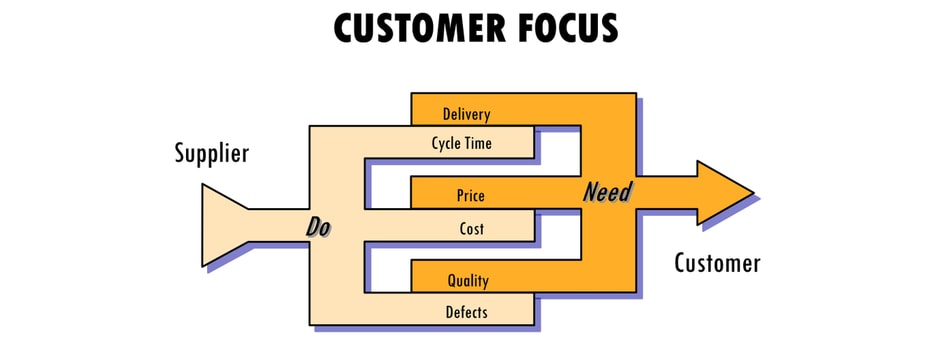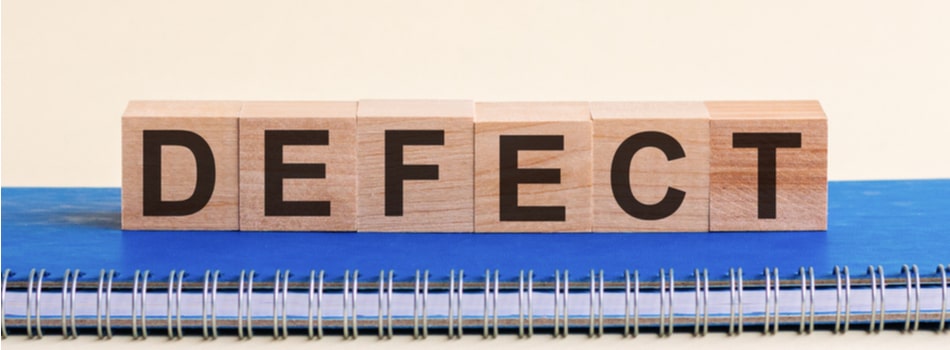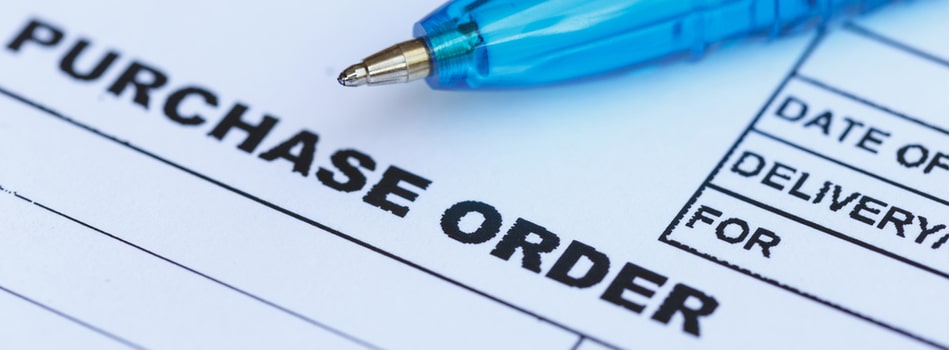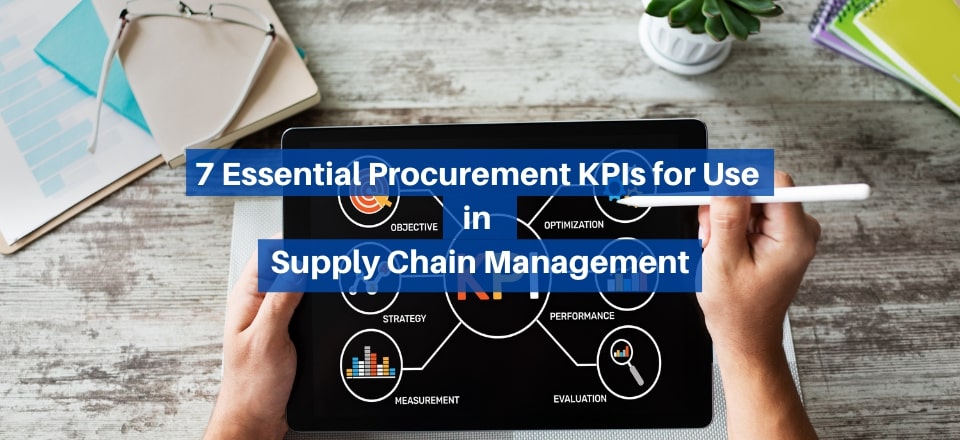Whether you’re planning to benchmark your supply chain or simply trying to improve how you measure its performance, it makes sense to know a little about the most commonly used KPIs for each supply chain component.
While some supply chain KPIs will provide a broad and high-level picture for end-to-end performance monitoring, others enable more granular insights into specific functions.

On this blog and the one published by our sister company Logistics Bureau, we often receive questions relating to metrics suitable for monitoring procurement performance.
To answer some of those inquiries, we decided to release the following brief overview of what we believe to be the most helpful procurement KPIs.
7 Procurement KPIs You Should be Using

You don’t necessarily need to use all the following metrics in your procurement department. Nevertheless, each of them has a valuable part to play in customer-focused performance measurement and is therefore worth including in your KPI portfolio. So take a look and think about which ones would be most relevant for your business.
1. Competitiveness of Pricing
The price you pay your vendors for their products is a significant factor in your company’s ability to compete in its market.
Here, we’re talking about all your vendors. It’s understood that you might have some strategic suppliers with which you are effectively partners, and in those cases, price is but a small element of the total value they provide.
However, your company probably procures a wide range of indirect supplies, and this is where pricing can impact your competitive advantage.

While there is no specific formula for a pricing-competitiveness KPI, it should merely be a case of checking the prices you are paying for supplies in given categories against those published in market price guides and online.
2. Supplier Defect Rate
There are several methods you can use to measure the supplier defect rate. For example, you might use simple observation to identify visible defects at goods-in, or you could make your analysis a bit deeper by testing a percentage of items received from the supplier. A lot will depend on the nature of your industry and the categories of supplies that you receive.

The fundamental formula for measuring supplier defect rate is to take the number of defective items and divide it by the total number of items received or tested.
Additionally, it will be essential to break the defects down by type, perhaps using a system of codes to help you target the most prolific issues for remedial measures.
3. Emergency Purchase Rate
Emergency purchases are bad news for your business costs, continuity, and planning, and they also increase supply chain risk. However, you can only minimise them if you know about them. For that reason, the emergency purchase rate KPI is one you should certainly be keeping an eye on. Calculate it as a ratio of emergency purchases to total purchases for a given period.
4. Purchase Order Cycle Time
Cycle times are critical in the supply chain. The faster things happen, the less working capital is tied up, and the better your cash flow.
Purchase order cycle time is a KPI that measures the elapsed time between raising a requisition request and the transmission of the purchase order to the vendor. If you prefer, you can also include the time taken for the vendor to respond with price information and confirmation of delivery scheduling.
5. Supplier Lead Time
Another cycle that’s worth measuring as part of a procurement KPI suite is supplier lead time—the time elapsed between the receipt of your order by the supplier and the moment of delivery at your goods-in facility. By shortening supplier lead time, you might find opportunities to reduce safety stock levels and gain other inventory management wins for your organisation.
6. Cost per Purchase Order and Cost per Invoice
In procurement, cost analysis is not just about the price of your company’s purchases. It also relates to the expenditure incurred in making them. For example, every purchase order costs money to raise and process, as does every invoice.
It’s critical to understand these costs and their composition because by reducing them, you increase the profitability of your organisation. That’s why the cost per PO and cost per invoice KPIs are highly desirable measurements in any procurement manager’s arsenal of metrics.

Does your company still use manual processes for raising POs and invoices? If so, these KPIs might reveal a solid case for upgrading to an automated solution—but you won’t know unless you’re actively tracking them.
7. Vendor Availability
How reliable are your suppliers? One way to get a handle on this is to measure their track record of product availability. Any time your vendor cannot supply you with a product to meet your order is an incident with direct consequences for your company.
Of course, the consequences, and their seriousness, will depend on the criticality of the product, but availability challenges are never desirable. That should be enough of an incentive to consider product availability as a valuable indication of your suppliers’ reliability, provided your procurement team is ordering in line with any framework agreed with the vendor.
To track vendor availability as a KPI, you need to measure the percentage of order lines (over a defined period) that the vendor cannot fulfill. The higher the ratio, the lower the vendor’s reliability.
Other Supply Chain KPIs Procurement Teams Should Track

All of the KPIs mentioned above are pretty specific to the procurement function of a business or organisation. There are a few other critical supply chain metrics, though, typically those used for end-to-end monitoring, in which any procurement professional should take a keen interest.
Examples of these KPIs include:
Supplier on-time performance: The percentage of purchase orders for which the supplier achieves delivery within agreed time windows.
Supplier in-full performance: The percentage of orders, or order lines, that the supplier fulfills completely. Unlike the vendor availability KPI, supplier in-full measures all fulfillment failures relating to the quantity and quality of items ordered. For example, the products are available, but some items are lost or damaged during the shipping/delivery process, or the wrong quantity was picked in the supplier’s warehouse.
Purchasing cost as % of sales: This KPI is of particular interest to an organisation’s executive team, to provide visibility into the impact of procurement on overall cost performance. For that reason, it makes sense to track it within the procurement function. In addition, when broken down further into the component costs, it can highlight departmental cost-saving or performance improvement opportunities.
KPIs: Your Guiding Lights to Improved Procurement
A well-chosen suite of procurement KPIs will provide your organisation or enterprise with the visibility necessary to save money, improve service from vendors, and exercise greater control over the quality of your inbound supplies.
While there is no clear-cut standard portfolio of indicators that suits every company, you should find that some, or all, of those summarised in this article, will align harmoniously with your organisation’s procurement strategy and objectives.
If you need a little help to select and deploy appropriate KPIs in your procurement function, the team at Benchmarking Success is standing by. Contact us today to discuss your needs and find out how we can assist you in meeting them.


